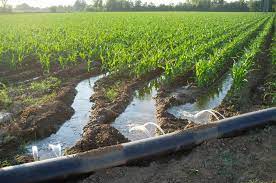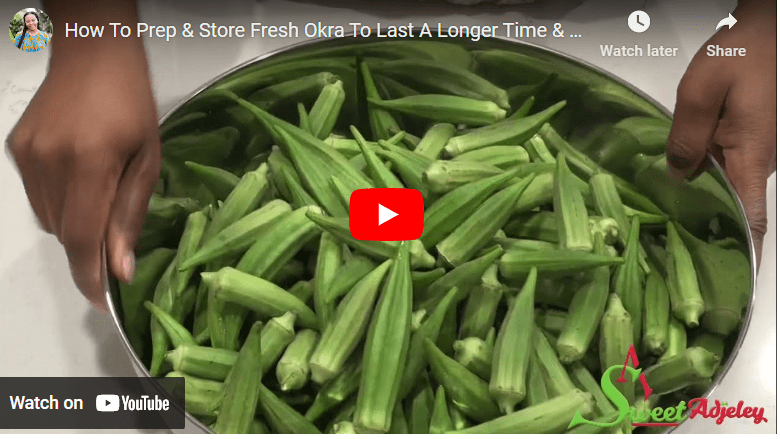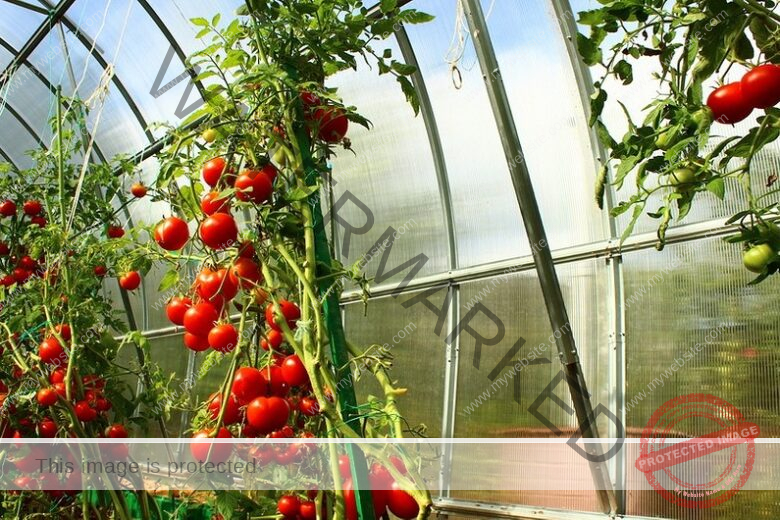Farrow irrigation is a modern irrigation system used to water crops in an efficient and cost-effective manner. It involves the use of a series of pipes and pumps to deliver water to the crops in a more targeted manner than traditional irrigation methods.
The system consists of two main components: the main irrigation pipe and the farrow irrigation system. The main irrigation pipe is used to deliver water from a nearby source to the crops, while the farrow irrigation system consists of a series of pipes and pumps that are used to spread the water over a larger area of land.
Farrow irrigation has become highly sought after by many farmers and for that reason, we have decided to provide you with detailed information including all you need to know about farrow irrigation.
What Is Farrow Irrigation: All You Need To Know
Farrow irrigation is an innovative system of irrigation that uses a specialized pump to draw water from a nearby source and send it through a network of pipes and sprinklers.
The system is designed to conserve water, reduce runoff and make the most efficient use of natural resources. Farrow irrigation works by gravity-feeding water through a network of pipes with sprinklers placed at strategic locations.
Read Also: [Installation Guide] Water Irrigation System For Greenhouse
The sprinklers are designed to distribute water evenly and reduce water evaporation. The system is tailored to the specific needs of each application and can be used for a wide range of crops.
Farrow irrigation is an ideal irrigation solution for farmers and commercial growers who have limited access to water or have limited resources.
Components of Farrow Irrigation
Farrow irrigation has several components which must be coupled together so that it can function well. The components of a Farrow Irrigation System include:
Read Also: Manual Irrigation System [All You Need To Know]
1. Sprinkler System (Farrow Sprinklers)
These are the fixtures that are attached to the Farrow pipe and spray out water in order to irrigate the field.
This is the primary component of a Farrow irrigation system, which includes sprinkler heads, pipes, and fittings.
The sprinkler heads are the most visible part of the system and can be placed in various positions to ensure the proper coverage of the area being irrigated.
2. Irrigation Pumps (Farrow Pumps)
This is the heart of the system and is responsible for providing the water pressure necessary for the water to be pushed through the system.
Read Also: Manual Irrigation System In Green House
These are used to move water from the source to the sprinkler system. The size and type of pump will depend on the size of the irrigation system and the amount of water needed.
3. Water Source (Farrow Pipe)
This is a type of pipe that is designed to deliver water under pressure in order to irrigate a field.
This is the source of the water that is used in the irrigation system. This can be a well, a river, a pond, a lake, or a combination of these sources.
4. Control System (Farrow Controller)
This is the system’s “brain”, it monitors the flow of water and adjusts the valves accordingly in order to ensure the proper amount of water is provided to the field.
This is a system of valves, controllers, and timers that can be used to control the flow of water to the sprinkler system. This system can be programmed to turn the water on and off at certain times or can be manually adjusted.
5. Filtration System
This is used to filter out any dirt or debris that might be present in the water before it is used in the irrigation system.
6. Drainage System
This is used to collect any excess water that is not used by the sprinkler system and redirects it away from the area being irrigated.
7. Farrow Valves
These are used to control the flow of water and can be used to create different zones in the field for more precise irrigation.
How To Install Farrow Irrigation
After purchasing your farrow irrigation, it is time to install To install it on your farm. Make sure you follow the outlined steps below.
Step 1. Determine the size of the Farrow irrigation system you need. This will depend on the size of the area you plan to irrigate and the type of crops you plan to grow.
Step 2. Lay out the Farrow irrigation pipe in the area you plan to irrigate. Make sure that the pipe is laid out in a way that will allow for the most efficient irrigation of the area.
Step 3. Install the valves and fittings on the Farrow irrigation pipe. Make sure to follow the instructions on how to properly connect the valves and fittings.
Step 4. Install the sprinklers in the appropriate locations. Make sure to follow the instructions on how to properly attach the sprinklers to the Farrow irrigation pipe.
Step 5. Connect the Farrow irrigation system to a water source. This can be done by either connecting to a municipal water supply or by using a pump and storage tank.
Step 6. Test the Farrow irrigation system to make sure that it is functioning properly. Turn on the water source and check for any leaks or blockages.
Step 7. Turn on the sprinklers and adjust the water pressure and flow rate as necessary.
Watch This Vidoe To Learn How To Install Farrow Irrigation System In your Farm
Advantages of Farrow Irrigation
Farrow irrigation has a lot of advantages which is a major attraction why many farmers are opting for the irrigation system.
- Farrow irrigation is a cost-effective irrigation method. It requires minimal installation and labor costs, and it can be used on small and large plots of land.
- Farrow irrigation is a water-efficient method of irrigation. By controlling the water’s flow rate, it ensures that only the amount of water needed is used, thus reducing the amount of water wasted.
- It helps to reduce the amount of labor necessary for irrigation. Farrow irrigation is easy to install and requires minimal maintenance, saving time and money.
- Farrow irrigation is beneficial for soil health. The low-pressure water supply helps to create better soil aeration, which improves root development and nutrient uptake.
- Farrow irrigation can be used in areas with irregular terrain. The system can be adapted to fit any landscape and can be used on slopes and hills.
- Farrow irrigation is efficient at reducing runoff and soil erosion. The slow and steady water application helps to prevent runoff and soil erosion, thus reducing the need for costly repairs and maintenance.
Troubleshooting Farrow Irrigation
You can troubleshoot farrow irrigation by performing the following tasks when needed.
- Adjust the water flow rate as needed. The rate should be adjusted according to the type of crop being grown and the amount of water needed to irrigate the area.
- Make sure the valves are set correctly and the right amount of water is delivered to each section of the irrigation system.
- Check the system’s filters, pumps, and pipes for any dirt or debris that may be blocking the water flow.
- Check for any leaks in the system. A leak can cause the water pressure to drop and affect the performance of the system.
- Make sure the irrigation system is properly connected to the water source.
- Evaluate the soil moisture levels and adjust the irrigation system accordingly.
- Check the electrical connections to the solenoid valve: Make sure all connections are secure, and no wires are frayed or exposed.
- Check the water pressure: Check the water pressure to make sure it is within the acceptable range. If the pressure is too high, the sprinkler heads may not be able to deliver water correctly.
- Check the sprinkler heads: Make sure the sprinkler heads are not clogged or obstructed in any way. Inspect the sprinkler heads for any damage or wear. Make sure they are positioned correctly and the nozzles are not clogged or blocked.
- Inspect the irrigation lines: Check for any kinks or cracks in the irrigation lines that could be causing water leakage or blockage.
- Test the solenoid valve: Test the valve by manually opening and closing it to ensure it is functioning correctly.
- Check the timer: Make sure the timer is set to the correct settings and that the system is running at the desired times. Check the timer settings to make sure the system is set to deliver the right amount of water at the right time.
- Check the irrigation system for any clogs or blockages. Make sure the water is flowing freely through the system.
Types of Farrow Irrigation Systems
There are different types of farrow irrigation systems available. You can choose base on the one appropriate to you.
1. Flood Farrow System
This is the most common type of furrow irrigation system and involves flooding the furrows with water to a predetermined depth. This can be done either manually or through automated systems.
2. Trickle Farrow System
This type of furrow irrigation system uses a drip irrigation system to deliver water to each furrow individually. It is a more efficient water-saving method than the flood furrow system.
3. Sprinkler Farrow System
This type of furrow irrigation system uses sprinklers to deliver water directly to each furrow. This is a very efficient water-saving method and is often used in areas with limited water supplies.
4. Center Pivot Farrow System
This type of furrow irrigation system uses a center pivot system to deliver water to each furrow. This system is often used in large-scale agricultural areas and is highly efficient.
5. Surface Farrow System
This type of furrow irrigation system is used in areas with flat terrain or in areas with terrain that is difficult to irrigate with other systems. This system is simple to install and maintain and is often used to irrigate small-scale agricultural areas.
Crops Suitable For Farrow Irrigation
Here are 10 suitable crops for farrow irrigation. The list of crops is not limited to those mentioned here.
- Rice
- Corn
- Wheat
- Soybeans
- Barley
- Oats
- Alfalfa
- Cotton
- Sorghum
- Sunflowers
Benefits of Farrow Irrigation
Farrow irrigation is a type of irrigation system that uses a series of shallow-drip irrigation lines that are spaced evenly across a field or crop area. This type of irrigation system has a number of benefits, including:
1. Increased Water Efficiency
Farrow irrigation systems are designed to reduce water waste by delivering water directly to the root zone of plants. This system is designed to reduce water runoff and can help conserve water resources.
2. Improved Soil Structure
In addition to conserving water, Farrow irrigation can also improve soil structure by allowing the water to penetrate deeper into the soil. This can help improve the soil’s ability to retain nutrients, which can benefit the crop’s overall health.
3. Reduced Labor
Farrow irrigation systems require less labor than traditional irrigation methods. This can help reduce labor costs and improve efficiency.
4. Improved Crop Yield
Farrow irrigation systems can help improve crop yields by providing the plants with a more consistent supply of water. This can help plants remain healthy and produce more abundant yields.
5. Reduced Disease
Farrow irrigation systems can help reduce the risk of disease by delivering water directly to the root zone of plants. This can help reduce the spread of diseases, which can help improve overall crop health.
Cost of Farrow Irrigation
Farrow irrigation is an effective and efficient method of irrigating crops, but it comes with a cost. The cost of farrow irrigation varies depending on the size of the field, the type of equipment used, and the complexity of the irrigation system.
Generally, the cost of farrow irrigation systems ranges from $0.50 to $2.00 per square foot.
Maintenance of Farrow Irrigation Systems
Farrow irrigation systems are designed to be efficient and easy to maintain. The following are some tips for ensuring that your system is running properly and efficiently:
- Make sure to check the system regularly for any signs of wear or damage. Look out for corroded or cracked pipes, clogged nozzles, and other signs of wear.
- Check the pressure of the system regularly. Low pressure can lead to uneven water distribution and inefficient irrigation.
- Inspect the system for leaks and clogs. Leaks can cause water waste and clogs can reduce the amount of water reaching the plants.
- Clean the system regularly. This can help to reduce clogs and maintain proper pressure.
- Make sure to replace any worn or damaged parts.
- Make sure to check the timer and adjust it as necessary.
- Make sure to check the water level in the tank regularly to ensure that it is not too low.
- Make sure to check the filters regularly and clean or replace them as needed.
- Make sure to check the pH of the water regularly to ensure that it is within the optimal range.
- Make sure to check the sprinkler heads and adjust them as necessary.
Following these tips will help to ensure that your Farrow irrigation system is running properly and efficiently, saving you time and money.
Best Practices for Farrow Irrigation
Here are some best practices to enable your farrow irrigation function optimally.
1. Install a Rain Sensor
Installing a rain sensor on your irrigation system can help you save on water usage. The sensor will detect when it has rained and shut off the system, avoiding unnecessary water use.
2. Set the Timer Correctly
Setting the timer correctly helps eliminate overwatering. Be sure to water your lawn at the right time of day and duration according to your local climate.
3. Check for Leaks
Leaks can lead to wasted water and can contribute to a higher water bill. Regularly check your system for any leaks, and fix them as soon as possible.
4. Use the Right Sprinkler Heads
Different plants and landscapes require different types of sprinkler heads. Be sure to select the right heads for your landscape to maximize water efficiency.
5. Check Water Pressure
Water pressure can affect the performance of your irrigation system. Check the water pressure regularly to ensure your system is working properly.
6. Adjust for Different Seasons
Different weather conditions require different irrigation settings. Be sure to adjust your irrigation system according to the season and climate to ensure your plants and lawn stay healthy.
Common Problems with Farrow Irrigation
Here are some common problems with using farrow irrigation.
1. Poor Coverage
Farrow irrigation often has poor coverage because of uneven water distribution, meaning some parts of the field may be over-watered while others are under-watered.
2. Clogged Nozzles
Farrow irrigation requires frequent maintenance and cleaning to prevent clogged nozzles, which can reduce water pressure and cause uneven water distribution.
3. Low Pressure
Low water pressure can cause insufficient water distribution, resulting in poor coverage and inefficient irrigation.
4. Leaks
Leaks can lead to wasted water and inefficient irrigation, so it’s important to regularly check fittings and valves for signs of wear and tear.
5. Poor Maintenance
Proper maintenance is essential for Farrow irrigation systems to function properly. If the system is not regularly checked and cleaned, the nozzles and pipes can get blocked, leading to poor coverage and inefficient irrigation.
What Is Irrigation For
Irrigation is the process of applying controlled amounts of water to land or crops to help them grow.
It is used to supplement or replace rainfall, which is often inadequate due to climate, soil type, or other factors. Irrigation can also be used to prevent soil erosion and to maintain soil fertility.
Conclusion
Farrow irrigation is a useful and efficient way to irrigate fields. It allows farmers to save time and labor, conserve water, and maximize crop yields. By controlling the water pressure, farmers can ensure that the water reaches the desired depth and area, while also reducing runoff and soil erosion. Farrow irrigation is a great way to increase crop production, while saving time and money.




